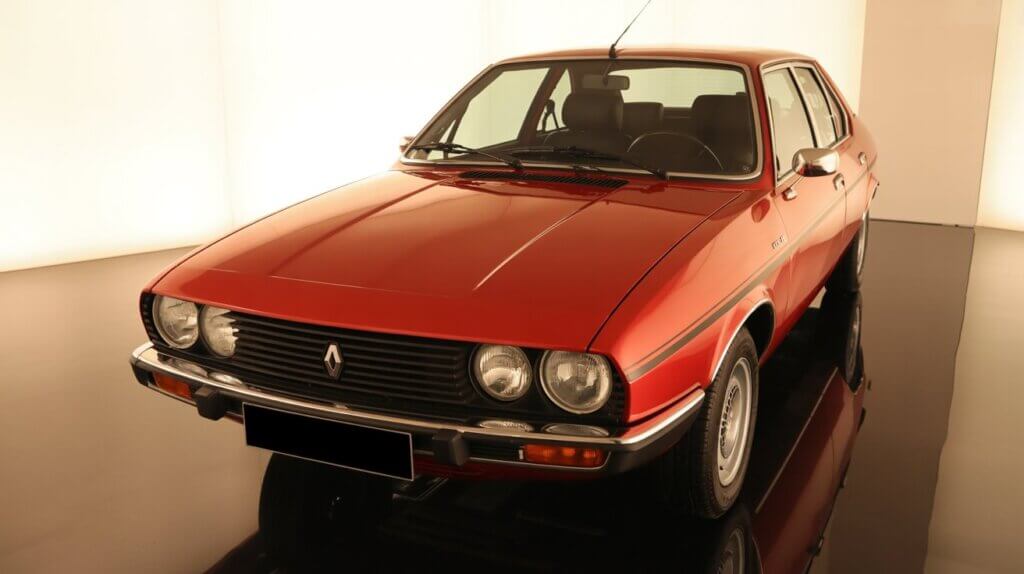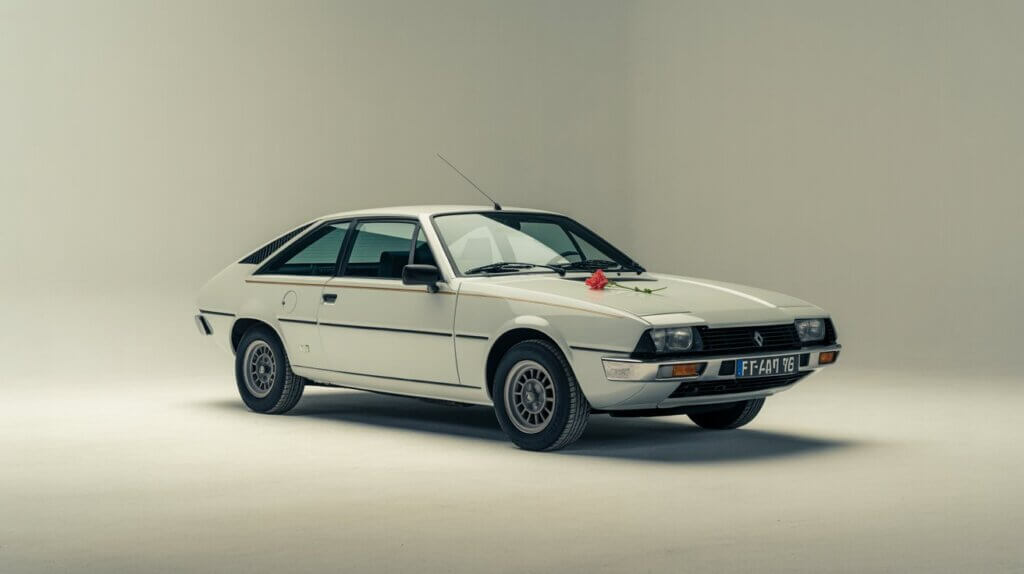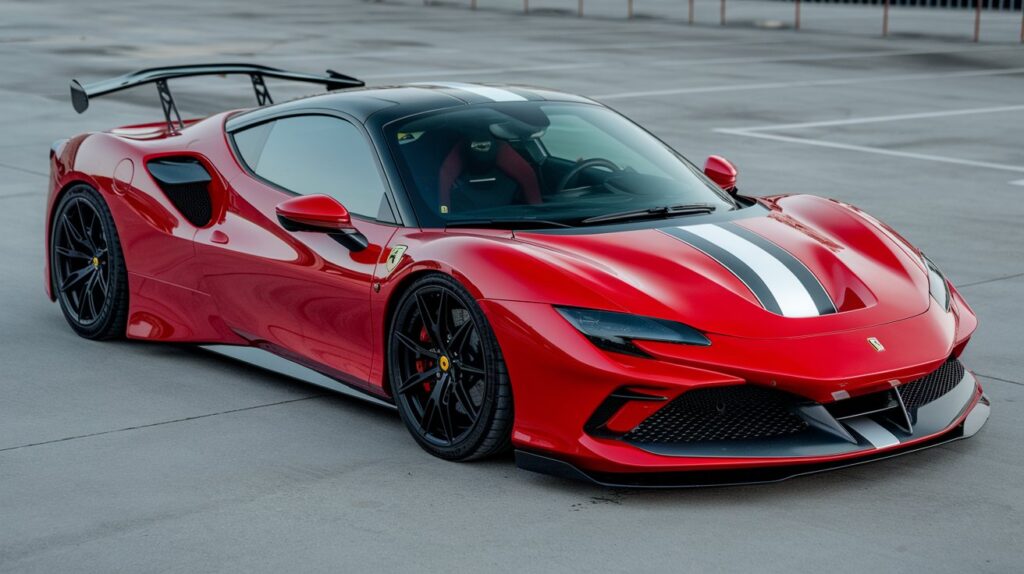A Legendary French Coupe Could Get a Modern Electric Rebirth
The Renault Fuego — a name that still sparks nostalgia among European car enthusiasts — might be set for a 21st-century comeback. Once a bold and aerodynamic sport coupe from the 1980s, the Fuego stood apart with its futuristic styling and tech-forward interior. Now, amid the industry’s electric renaissance, rumors suggest Renault could be preparing to revive the Fuego as a sleek, all-electric coupe.
Could the Renault Fuego EV become the French answer to modern retro-inspired EVs like the DeLorean Alpha5 or the BMW 2002 Hommage? Let’s unpack what we know, what we suspect, and what enthusiasts are hoping for.
Why the Renault Fuego Still Matters
The original Renault Fuego, introduced in 1980, wasn’t just another two-door coupe. It boasted a drag coefficient lower than many sports cars of its time and featured innovations like remote central locking and onboard diagnostics — practically unheard of in that era.
Renault sold more than 265,000 Fuegos in Europe and Latin America, with a cult following developing in markets like France, Spain, and Argentina. Despite modest power outputs (ranging from 1.4L to 2.2L gasoline engines), the Fuego’s design made it memorable.
But the world has changed — and so has Renault. Today, the brand is making aggressive strides into electrification with models like the Mégane E-Tech Electric and Renault 5 EV. The timing might be perfect for a Fuego revival — especially as brands race to mine nostalgia for EV appeal.
What Could a Renault Fuego EV Look Like?
While Renault has yet to officially confirm the Fuego’s revival, insiders suggest that the automaker is exploring a design study — possibly built on the AmpR Small (formerly CMF-B EV) platform that underpins the new Renault 5 and upcoming Renault 4 EV.
Here’s what a modern Fuego might include if brought back as an EV:
Potential Specs (Speculative)
| Feature | Likely Offering (Estimated) |
|---|---|
| Platform | AmpR Small / CMF-B EV |
| Power Output | 150–220 hp |
| Battery Capacity | 50–60 kWh |
| Range (WLTP Est.) | 250–300 miles |
| 0-60 mph | Around 7.0–8.0 seconds |
| Drivetrain | FWD, possibly dual-motor AWD |
| Pricing (Est. EU Market) | €35,000–€40,000 |
A modern Fuego EV could combine retro cues (like a wraparound rear glass hatch and sculpted profile) with the LED tech and minimalist interior design language seen in Renault’s latest models.
Pros and Cons of a Renault Fuego Electric Revival
Pros:
A Renault Fuego EV could tap into nostalgic appeal while appealing to modern tastes for stylish, efficient coupes. Its revival would expand Renault’s electric lineup with a sportier, youth-oriented option — possibly drawing buyers away from generic crossovers.
Cons:
The coupe segment is shrinking in Europe and nearly extinct in the U.S. From a business standpoint, investing in a niche EV could be risky. Plus, without at least one performance trim or dual-motor variant, it could struggle to stand out against competitors with stronger specs or brand equity.
How Would a Fuego EV Compare to Other Retro Electric Cars?
Renault wouldn’t be alone in blending nostalgia with next-gen EV tech. Just look at the DeLorean Alpha5 — a modern reinterpretation of an 80s icon, this time as a gullwing EV grand tourer. The BMW 2002 Hommage also reminds us how classic shapes can inspire fresh electric performance.
Compared to those, the Fuego would likely land in a more affordable bracket — targeting drivers who want personality and flair without supercar price tags. If Renault plays it right, the Fuego EV could slot somewhere between a Mégane E-Tech and a Peugeot e-308, appealing to both style-conscious urbanites and loyal Renault fans.
Would It Be Fun to Drive?
Renault knows how to tune a chassis — just ask anyone who’s driven a Clio RS. If the Fuego EV prioritizes dynamics over raw power, it could deliver a more engaging experience than many front-heavy electric crossovers.

There’s also a possibility Renault could partner with Alpine, its performance sub-brand, to co-develop a sportier variant — similar to how Hyundai offers N-tuned versions of its Ioniq models. That could help the Fuego become more than just a design exercise and position it as a true enthusiast’s EV.
Safety, Technology, and Interior
Expect the Fuego EV — if it happens — to offer Level 2 driver assistance systems, a full digital cockpit, and infotainment powered by Renault’s Google-based system. Features like adaptive cruise control, lane-keep assist, and a 360° camera would likely be standard or optional.
Renault has been improving its Euro NCAP scores with newer EVs, and a reborn Fuego would need to meet the latest safety standards, particularly if it’s intended for global markets.
Ownership and Charging
If built on the AmpR Small platform, the Fuego EV would likely support up to 80–100 kW DC fast charging — giving drivers 10–80% in around 30 minutes. Renault’s expanding Mobilize brand could also offer battery leasing or subscription options for budget-conscious buyers.
With more competitive warranty coverage (Renault currently offers 8 years/100,000 miles on EV batteries), ownership costs should stay low — especially with fewer moving parts and regenerative braking extending pad life.
Is There a Market for a Sporty Electric Coupe?
That’s the big question. EV buyers today overwhelmingly prefer crossovers and SUVs. Still, with global EV sales slowing slightly in 2025 and buyers craving variety, automakers are hunting for differentiation.
A Renault Fuego EV wouldn’t just be a nostalgic nod — it could be a halo product in a shrinking coupe market. And if Renault keeps the pricing attainable, it might strike a unique balance between emotion, affordability, and electric innovation.

Conclusion: Who Would the Renault Fuego EV Be For?
If Renault revives the Fuego as an EV, it would likely target drivers who want more than just A-to-B transportation. Think: urban professionals, young enthusiasts, and Gen X buyers with fond memories of the original.
It wouldn’t be the most practical EV — and that’s the point. Like the original, the Fuego EV would stand out in a crowd. For those tired of bland crossovers, a stylish, slightly sporty, retro-chic electric coupe could be exactly what the market didn’t know it needed.
FAQ: Renault Fuego Revival Rumors
1. Is Renault really bringing back the Fuego?
No official announcement has been made, but Renault insiders and European automotive media have hinted at a potential revival. It may begin as a concept study before production is considered.
2. Will the new Fuego be fully electric?
If revived, it’s highly likely the Fuego would be an EV. Renault is phasing out internal combustion for new models in Europe, and any retro revival would align with the company’s zero-emission strategy.
3. What platform would the Fuego EV use?
It would likely ride on Renault’s AmpR Small (formerly CMF-B EV) platform, shared with the new Renault 5 and 4 electric models.
4. How fast would a Fuego EV be?
Estimated 0–60 mph times could fall in the 7 to 8-second range depending on motor output. A dual-motor version could potentially be quicker if produced.
5. What would the price of the Renault Fuego EV be?
Expect pricing in the €35,000–€40,000 range in Europe, though that could vary based on trim levels, battery size, and market incentives.
6. Would it be available in the U.S.?
Unlikely — Renault doesn’t currently sell passenger vehicles in the U.S., and the coupe EV market is niche. However, it could appear in Latin America or Australia if demand justifies expansion.
7. What other retro EVs is it competing with?
Models like the DeLorean Alpha5, BMW 2002 Hommage (if greenlit), and upcoming Volkswagen ID. Golf concepts all target the “modern classic” EV niche.
8. Would the Fuego EV be a performance car?
Probably not in its base form, but it could offer warm-hatch performance. An Alpine or RS variant could add real excitement.
9. What safety tech would it include?
Expect features like automatic emergency braking, lane assist, blind-spot monitoring, and possibly Level 2 semi-autonomous driving.
10. Will it have good range for daily driving?
Yes. A WLTP range of 250–300 miles is realistic, making it suitable for daily commuting and occasional trips — especially in urban Europe.
If Renault truly wants to reignite the spirit of its 1980s icon, the Fuego EV might be the flame that sparks a new wave of emotion-driven electric coupes.
Let us know — would you buy a Renault Fuego EV?

